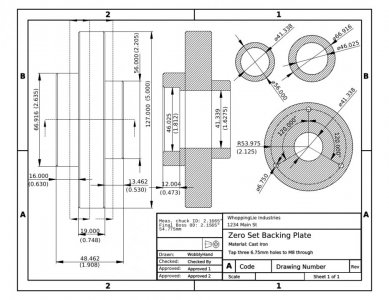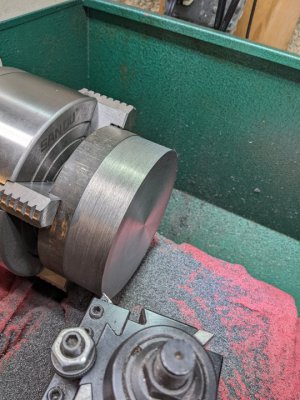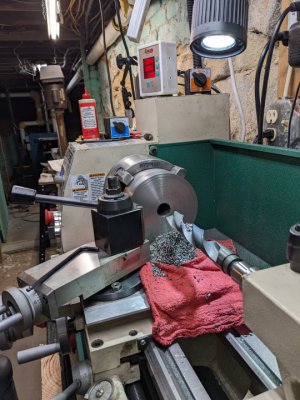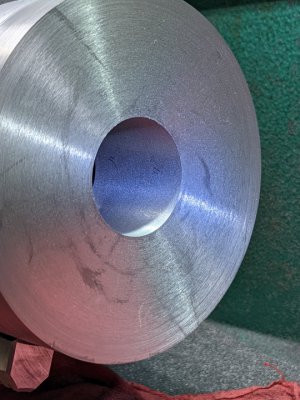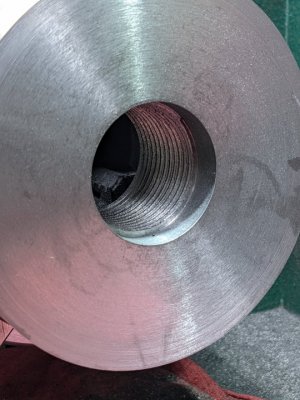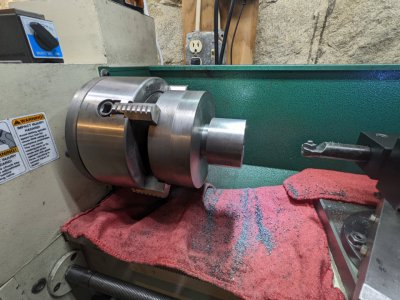Man, I can only dream of hitting half a thou. I have to work hard to get +- 0.002 on most things I work on. I just don't have the patience or the skill/experience needed.
Must be the patience. I take it slow, maybe too slow. I think me hitting this was a fluke. I'm usually further off. Slowly, I seem to be getting a little better. I was within 0.006" and changed to the better (small radius) insert. The small radius insert seems to make it a lot easier to hit what you want. The 0.015" radius insert was noticeably deflecting on small cuts. I remember putting in a 0.005" cut and only getting 0.003". (I knew this would happen from reading
@mikey 's boring thread.) The 0.002" radius insert will take a 0.001" cut.
Almost blew the whole piece when I started boring the spindle counterbore. Was boring away and suddenly realized I didn't know the stop depth! Caught it in time. Was a close one! So here is the semi-done counterbore. Within 0.020 on ID and depth. Setting up to do the threading with a LH threading bar and needed a break.
@mmcmdl loaned me this tool and I greatly appreciate it! This will be it's intended use. Thanks Dave! Yes, Dave, this is the thread, I promised you.
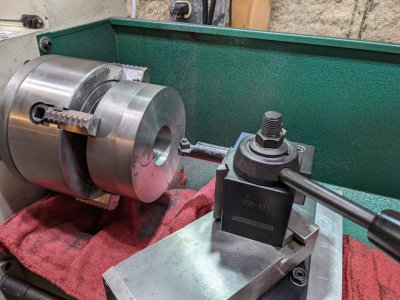
For some reason, it took a long time to set the compound angle. Haven't done it on this lathe and was struggling to figure out a good way to indicate it. The protractor doesn't go past 90! Not that it is accurate, but how hard would that have been to put in the extra marks? Finally took a ground 30 degree angle and stuck it to the compound using a magnetic block from an indicator stand I junked. Then indicated the surface along the cross-slide axis. Eventually the readings started making sense and got it to within 0.0005" in a 1" travel. Think that is an error of 0.28 degrees. Stopped fiddling with it. I should have put on my good DTI and got it to a tenth, but got lazy. Figure it's a lot closer than using a protractor with it's wide black lines.
When I get back to the shop, I will measure the counterbore OD again, to ensure clearance for the threads! Work double checking. If all ok, then time to put on some gloves and change the gears back to 8 pitch threading mode. Sure would be nice to have a real QCGB or an ELS! Gear changing isn't particularly hard, but it sure is messy.
I'm going to thread away from the chuck. The back plate is threaded, but has clamps to the spindle. I will use small cuts, and hope that nothing comes loose on me. I will snug the chuck down tight first using a wrench and then lock those clamps.
